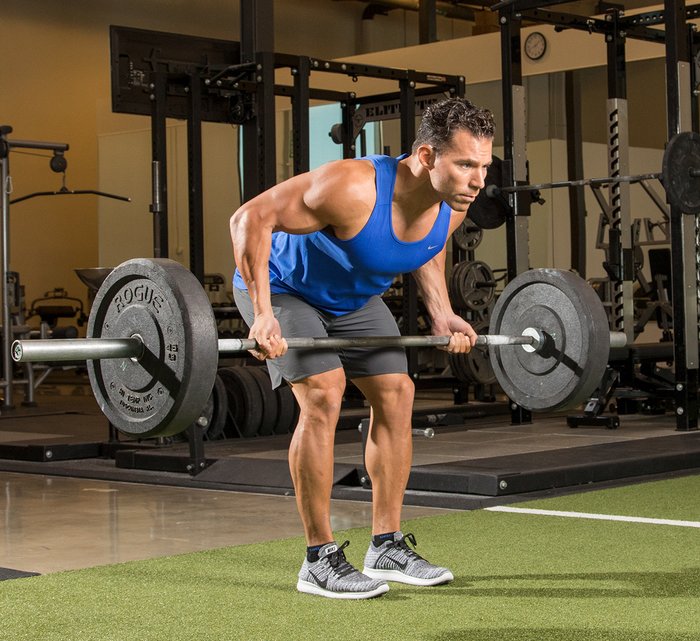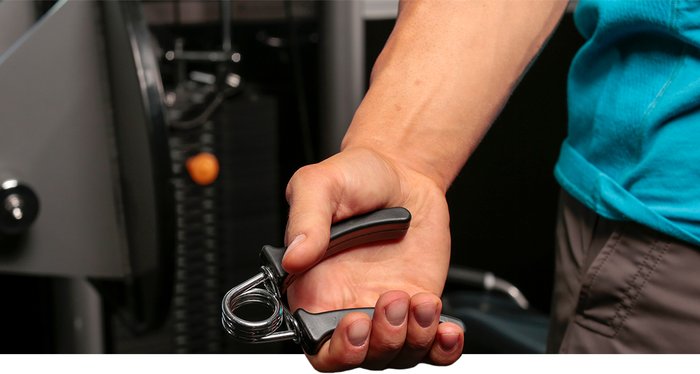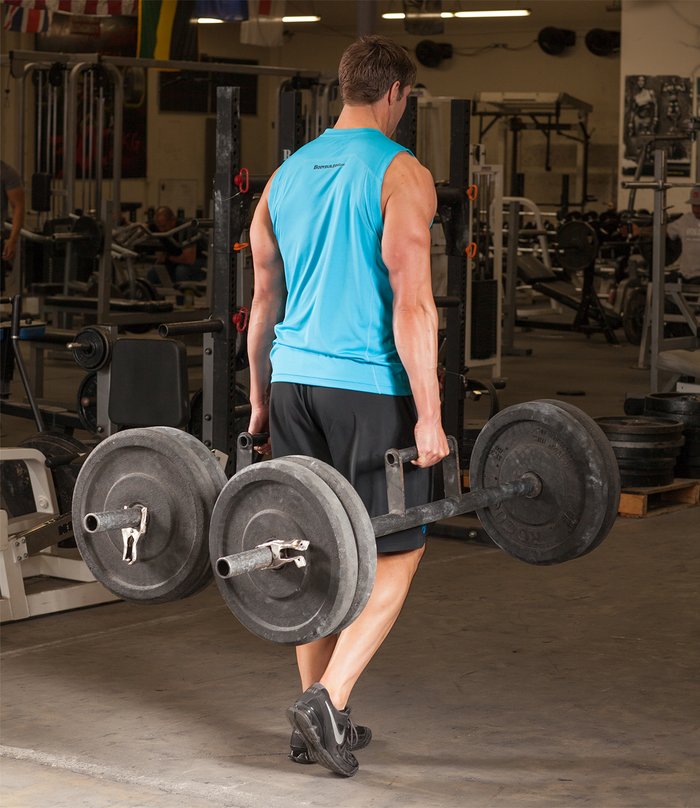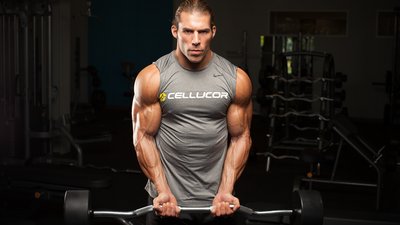If you're like most avid weight trainers, you've never given much thought to your forearms because you've been too busy focusing on big guns, thick pecs, cobra lats, or thunder thighs. That's cool. I get it. Just don't forget about your forearms. Thin, spindly forearms look weak and wimpy, whereas powerful, rugged forearms are impressive—and they're almost always on display.
Big forearms are even more impressive if you've also built some decent biceps and triceps. What you don't want is for those big guns to clash with pea-shoot forearms that remind people more of Jerry Seinfeld than Jerry Ross.
Maybe you tried doing wrist curls for a while, saw meager results, and chalked it up to bad genetics. Genetics always play a role in the development of any muscle group, but that doesn't mean you can't improve and make gains. Chances are you've just been going about it the wrong way. Here's the right way.
Tip 1: Leave the Straps in Your Locker
In my article on insider tips for back training, I implored you to use straps to eliminate the weak links posed by your grip strength. I stand by that recommendation. But when it's time to beef up your forearms, forget the straps. Here's why.
Any time you do a pulling movement you need to hold the bar with your thumb and fingers wrapped around it. Otherwise the bar, dumbbell, or cable attachment will fall out of your grasp. The more iron you pull, the more you use your grip, which is powered by the flexor muscles in your forearm. By going as heavy as you can without a strap you're working your forearms.

Your forearm flexors will benefit the most when you forego straps on exercises that use a pulling motion such as deadlifts, barbell rows, and chin-ups. You also work your forearm extensors when you push, but they don't get worked as hard as when you pull.
Tip 2: Hold on Tightly
If you aren't comfortable ditching your wrist straps on back day, but still want to work your forearms, there is a way. Set up a heavy barbell in a power rack and hold it at arms' length for sets lasting 30-60 seconds. Do the same thing with heavy dumbbells in the dumbbell rack. Aim for 8-10 reps to get your forearms pumped and tight.
Tip 3: Cables for Colossal Forearms
You can use barbells or dumbbells for wrist curls and reverse wrist curls, but the constant tension cables provide can deliver a much better pump and burn. There are a number of ways you can go about this.
You can set up a short bar attachment on the low pulley and kneel in front of it, using your knees like a preacher bench as you do your curls. You can also bring an actual preacher bench over to the cable station and use that to brace your forearms for pure isolation. Another option is to use D rings for cable curls, just like you might use them for cable crossovers.
Whatever approach you use, you can usually focus better when you train one arm at a time.

Tip 4: Go Really Low-Tech
You can do quite a bit of forearm training at home with some very basic equipment. One tool athletes have used for decades consists of a plate tied to a dowel or short piece of broomstick.
Drill a hole through the stick, thread a length of thin rope through the hole, tie it off on the dowel, and tie the other end around the plate. Roll the plate up by turning the stick to wrap the rope around it, then slowly unroll the rope until the plate hits the floor. Do this over and over until your grip or forearms give out. Rest a minute, then do it again. A few rounds of this is all it takes.
Another old-school classic is the hand gripper, which comes in different strength levels. The easiest ones take just 60 pounds of pressure to close, but there are elite models that take more than 360 pounds to get the job done. Be forewarned: Only insanely strong men and women can use those.

Tip 5: Work Forearms Every Other Day
Forearms are made up of very dense muscle tissue, much like calves, and training them once a week won't do much for growth. Think about how often you use your forearms every day, in so many everyday tasks. They're used to doing lots of work.
That's why you'll get the best results by training forearms more frequently, as much as three times a week or every other day. Try to arrange your workout schedule so that you don't train forearms the day before either back or biceps, since sore forearms will detract from either workout. You're actually better off working them at the end of those workouts.
Tip 6: Very High Reps for Growth
You might see decent gains working your chest, shoulders, or arm muscles in the 8-12 rep range, but that's not going to do much of anything for your forearms. Instead, try doing sets with a minimum of 15 reps, but going as high as 25-50 reps per set.
Some of you rolled your eyes just then, assuming that such high reps can't possibly help build any muscle group. But stop and think about some of the people who have the biggest forearms. Ever check out a plumber's or an auto mechanic's forearms? Talk about Popeye! That's from turning wrenches and pliers with maximum effort hundreds of times a day as they loosen or tighten various parts.
No one expects you to spend hours a day working your forearms, but the lesson here is that higher reps bring the best results.
Tip 7: Take a Walk
If you've never tried it, take a farmer's walk with a pair of heavy dumbbells. All you need is a clear lane to take about 20 steps, walking forward at a normal pace while carrying the dumbbells at your sides. Go until your grip is fried. As you get better at it, you can use heavier dumbbells and do round trip walks.



